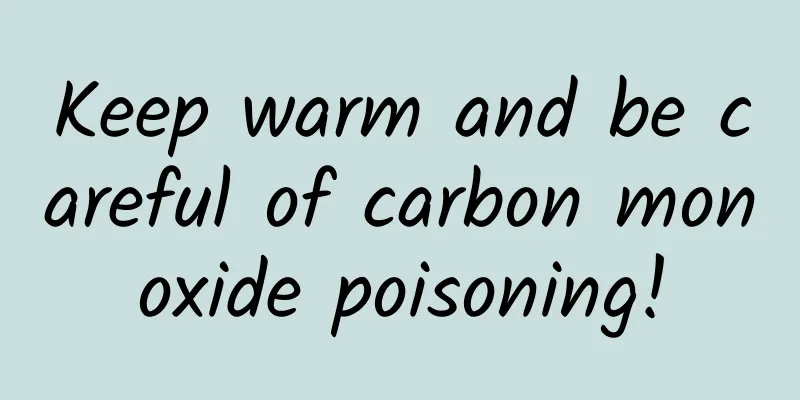The research has confirmed: If you are sleepy but don’t sleep, your DNA will be damaged!

|
We all know that humans spend 1/3 of their lives sleeping. Similarly, other organisms with nervous systems, whether higher or lower animals, and even invertebrates such as jellyfish and worms, also need sleep. However, whether it is humans or other creatures, the ability to sense danger and respond during sleep is almost zero. So why do they still sleep? And how is sleep triggered? (Source: Pixabay) Recently, a research team led by Professor Lior Appelbaum from the Multidisciplinary Brain Research Center of the Faculty of Life Sciences at Bar-Ilan University in Israel confirmed in zebrafish and mammals that when awake, mammalian brain nerves will continue to accumulate DNA damage and recruit PARP1 protein into neurons for repair. When the damage accumulates to a certain level, PARP1 protein will send a signal to put the brain into a sleep state and recruit DNA damage repair proteins for repair. In this regard, Professor Appelbaum said, "Our results show that the PARP1 pathway can send signals to the brain to induce sleep and perform DNA repair, regulating the balance of neuronal DNA damage and repair. This discovery can explain the connection between sleep disorders, aging and neurodegenerative diseases, and lay the foundation for the future development of sleep disorder-related drugs." The related research, titled "Parp1 promotes sleep, which enhances DNA repair in neurons", was published in the recent journal Molecular Cell. Why do we need sleep? Although sleep often shows the most vulnerable side of organisms, all organisms with nervous systems need sleep, but different organisms need different amounts of sleep. For example, wild elephants roaming around only need 2 hours of sleep a day, humans need 7-8 hours of sleep a day, and owls need about 17 hours of sleep a day. Previous studies have shown that sleep is also essential for the normal functioning of various organs in the human body. For example, human memory is completely formed and consolidated during sleep. When humans fall asleep, the brain replays, analyzes, and stores the day's events, leaving memory traces. At the same time, the degree of neural changes in the brain during sleep is twice that of the awake state. The signals of some neural pathways are enhanced and new connections between cells are formed, while the signals of other pathways are weakened and lost, making the memory in the brain much clearer than when it is in a continuous working state. (Source: Pixabay) Similarly, the metabolism of the skin is most vigorous during sleep. Because when humans are asleep, the consumption of muscles and internal organs is reduced, and their blood vessels are in a relatively bottleneck state, while the blood vessels of the skin are completely open, and blood can fully reach the skin, providing it with nutrition, self-repair and cell renewal, which plays a role in delaying skin aging. If you miss "sleep", the best time to nurture beauty, your skin will easily become dry, rough, dull, and wrinkled, especially dark circles around the eyes. In addition, during sleep, various hormones that are regularly secreted actively play a role. Take growth hormone as an example. When humans enter a deep sleep state for one hour, its secretion reaches a peak, which is more than three times that of the daytime. In addition to promoting growth, this hormone can also accelerate the burning of body fat. On the contrary, if there is insufficient sleep, endocrine disorders, and loss of regular hormone secretion, not only will emotions become easily excited, but it will also induce a series of diseases. How do we feel tired and fall asleep? Previously, a series of studies on mammalian sleep behavior have found that the time of falling asleep, sleep duration, and sleep quality of humans and other mammals are mainly regulated by the biological clock and sleep pressure. The length of sleep time is mainly related to sleep pressure, that is, the longer we are awake, the more damage the brain accumulates, and it takes longer to rest to repair. However, to date, the mechanism by which the mammalian brain perceives fatigue and drives the sleep process remains unclear. Only a series of hypotheses have been proposed, such as the accumulation of toxic metabolites, increased demand for energy and macromolecules by neurons, the number of synapses, repair of neural damage, cellular stress, etc. In addition, the study also showed that the neuronal activity of mammals in the awake state can induce double-strand breaks in neuronal DNA, and the repair of DNA damage in neurons is slower than that in normal dividing cells, resulting in continuous accumulation of damage. The sleep state can reduce the level of DNA damage. Therefore, the researchers speculated that the accumulation of DNA damage to a certain threshold may be the "driving factor" that triggers mammalian sleep. To verify this speculation, the research team led by Professor Appelbaum first studied zebrafish, inducing neuronal DNA damage in zebrafish through radiation, pharmacology and optogenetics. The reason for choosing zebrafish is that zebrafish have a transparent brain with a similar sleep pattern to humans, which is convenient for research. (Source: Bar-Ilan University) The results showed that as DNA damage increased, the zebrafish's need for sleep also increased. At the same time, the researchers also found that once the accumulation of DNA damage exceeded the maximum threshold, the zebrafish would enter a sleep state, and then neuronal DNA damage would decrease. At the same time, the researchers also found that zebrafish need at least 6 hours of sleep to repair DNA damage. If the sleep time is insufficient, the DNA damage cannot be fully repaired and the zebrafish will continue to sleep during the day. Since the accumulation of DNA damage is a key factor driving brain sleep, how does it drive the brain into a sleep state and repair DNA damage? Protein PARP1 is a very important substance in DNA damage repair. It can mark the sites of DNA damage in cells and recruit related DNA damage repair proteins to repair the damaged sites. Subsequently, researchers confirmed in zebrafish that increasing PARP1 expression through genetic or pharmacological means can promote zebrafish sleep and enhance the repair of sleep-dependent DNA damage. In contrast, inhibiting PARP1 protein activity not only prevents DNA damage repair, but also causes zebrafish to not realize they are tired and enter a sleep state even when DNA damage in zebrafish neurons exceeds the threshold. In other words, PARP1 protein is a key factor in the brain's perception of DNA damage and driving sleep. In addition, the researchers also tested the role of PARP1 in sleep regulation in mice through electroencephalography. The results showed that, like zebrafish, inhibition of PARP1 activity also reduced the sleep time and quality of mice, further confirming the driving role of PARP1 on sleep. Finally, through 3D time-lapse imaging, Professor Appelbaum confirmed that during sleep, the PARP1 protein can enhance chromosome dynamics and promote DNA damage repair, while this process cannot be achieved in the awake state. (Source: Pixabay) Overall, this latest discovery describes in detail the mechanism of triggering sleep at the cellular level, laying the foundation for studying the causal relationship between sleep disorders, aging and neurodegenerative diseases. Interestingly, PARP1 inhibitors such as Olaparib have long been approved for the treatment of tumors such as ovarian cancer around the world. In clinical applications, the most common adverse reactions of these drugs include chronic fatigue caused by lack of sleep. This may also confirm the "driving" role of PARP1 protein in sleep. References: https://www.sciencedirect.com/science/article/pii/S1097276521009333?via%3Dihub=#sec3 https://www.sciencedaily.com/releases/2021/11/211118203657.htm Written by: Zhu Hengheng Editor: Wang Haha Layout: Li Xuewei |
<<: Heavy snow丨Cold clouds cover the sky, white snow falls on the ground
>>: How are water droplets formed? The principle behind droplet formation is not simple.
Recommend
How to identify and acquire high-value super users?
Super users are users who are willing to pay for ...
"The rumbling of the chariots and the neighing of the horses" is the majestic first chariot of the Han Dynasty.
The Ziyang Bronze Chariot is an outstanding repre...
Coupon Operation Guide: One coupon to attract new customers, promote activation, conversion, and recall
Coupons can play a good role in attracting new an...
Study finds COVID-19 survivors at high risk of death within 12 months
Since the outbreak of the new coronavirus pandemi...
After the "battery gate" comes the "chip gate", how long can Apple's stock price last?
Fresh off the news of the “battery scandal” in whi...
Zhejiang Asian Games | Plants also exercise series: Sensitivity causes "ADHD"
Diverse Asian civilizations have given birth to a...
90% of APP operation veterans think that these methods are effective. How many of them do you know?
An experienced APP operator must go through a pro...
Tulip: I am extremely beautiful and priceless, all because of a "serious illness"
The first time I planted tulips was in December, ...
The purchase price was 5 yuan and the selling price was 30 yuan. More than 100 were sold in one day! Recommendation of summer blue ocean side job, selfless sharing!
It's only two months until summer, and the we...
New Media Marketing in the Medical Beauty Industry
After the epidemic, medical beauty institutions h...
CIST: Survey finds 62% of game studios use AI in development
A recent survey found that nearly two-thirds of g...
Online marketing activity planning
The APP online promotion activity planning progra...
Event planning and promotion, 4 key points to help you plan a screen-sweeping event!
Nowadays, when it comes to event planning, many p...
Xiaoyu Yilian announced the completion of 125 million B round of financing
On the morning of March 22, Xiaoyu Yilian held a ...
Changan Automobile Technology Ecosystem Conference User Forum was held, with four major measures to ensure the construction of a new service platform
On August 24, the 2021 Changan Automobile Technol...









